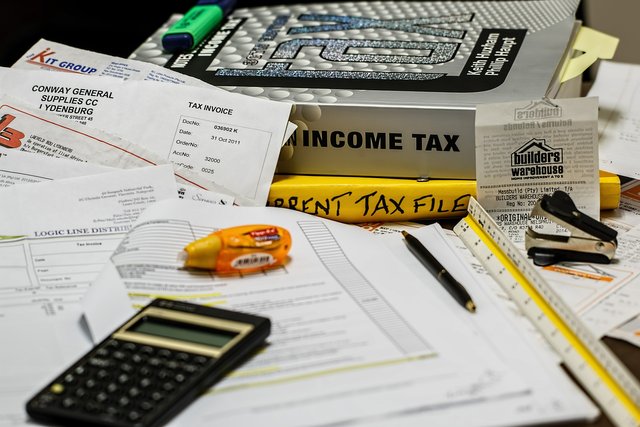3 Strategies from Making Goals to Financial Freedom

Financial Goals to Financial Freedom
All of us in some way seek financial freedom. Financial freedom is not perceived as easy. A lot of people try “get rich quick” strategies and fail. But why do they fail? Well, let’s put it this way, great salespersons will sell you an IDEA that is plausible but can conflict reality. The salesperson’s only goal is to SELL you the IDEA and not get you to the goal.
We see these get rich quick ideas all over the internet and TV. We watch these salespersons because our brain is naturally attracted to the possibility of making more money. Our basic brain wants are food, sex, and pleasure.
But this is a problem! How do we keep from being taken advantage of in life? Why are these salespersons amassing a crowd of paying customers while I sit and watch their sales pitch? The crowd of paying customers could believe that there is a way to becoming more wealthier than they are now. How do we know that the salesperson is not lying, and they actually have a quick to get rich scheme? We can only guess or ask someone.
But for us REALISTS, getting wealthy is not something easy. There is some effort involved. The only thing preventing us from blowing thousands of dollars on get wealthy programs is to have a program ourselves.

The Program
Developing our own program is not that hard. It is called goals. You should set goals in life that will help you progress step-by-step to your ultimate financial freedom. But before we can set up goals we do need to assess our financial situation.
When we do a complete evaluation of our financial condition we should consider things like revenue, expenses, assets, liabilities, and even tax. An overall assessment includes gathering all of the balances of your accounts and putting them on the table. You should have a tax assessment of these accounts.
For example, if you list out all of your debts you should separate the tax-deductible interest debts from the non-tax-deductible interest debts. On top of this you should discount the interest rate on all of these debts to include the tax deductibility so that you can compare interest rates and balances.
Very sophisticated stuff. Let’s break this down in an example. For example, we have the following balances:
Debt / Balance / Interest Rate / Yearly Interest
Credit Card Debt / $20,000 / 29% / $5,800
Student Loan Debt / $50,000 / 4% / $2,000
Mortgage Debt / $150,000 / 4% / $6,000
Obviously, in this example a prudent person would focus on bringing down the credit card debt because
- The debt is not tax deductible.
- The interest rate is extremely high.
- The interest on the credit card debt brings the overall rate of interest on all of the debt higher and not lower.
So, this brings us to our next point. The rate of interest would be the total interest less the tax benefit divided by the total amount of debt. Let’s say we know the tax benefit is 25% of the tax-deductible interest. Let’s calculate the effective rate of interest on the debt in the example.
Total interest less tax benefit ($5,800+$2,000+$6,000-$500-$1,500) = $11,800
Total Debt = $220,000
Effective Rate ($11,800/$220,000) = 5.4%
That credit card interest is really damaging. The person who has this debt should try to pay off the credit card debt first.
Here are some other questions you should ask yourself when you assess your personal financial statement.
• How much debt do I have?
• What kind of debt do I have?
• Is the interest tax deductible?
• How much assets do I have?
• Are my assets invested properly?
• Should I increase my income by getting a part-time job?
In addition to the questions above, you should review your expenses. Do you have unnecessary gambling or drinking expenses? You should reduce or eliminate these expenses since there are other places in your life that could use this money.
Now, I am not saying have NO fun in life and be an Amish person. (No offense to the amish.) But keep in mind that you have to have some limitations to leisurely expenses.
When you do a full financial assessment of all of your accounts including the assets and liabilities you will truly understand your financial position. From here you can come up with a strategy to make your life better.
Fixing your financial situation and coming up with goals that are achievable is psychologically healthy. What is even healthier is achieving your goals and getting closer to financial freedom. When you make good financial decisions that impact your life for the better you will have positive lifestyle changes. You bank account along with your assets should increase to the point where you can review investment opportunities, properties, business ventures, and contribute to a retirement plan.

Financial Planning using Financial Goals
Financial goals are necessary to mute out the salespersons and the “snake oil salesmen” from selling you a dream when you can entertain your own dream. Here are some tips on how to make good financial goals.
• Use a program to check your financial stats and investments periodically.
• Plan early in life so that you can meet your goals over time.
• Set and use measurable and achievable financial goals to construct a budget.
Financial Goals
Thinking in two dimensions when you set up your financial goals is not an effective way to set up goals. You should think in terms of three dimensions. Remember in math class. You were taught that three dimensions include time, distance, and space. You should understand your personal limitations when it comes to time, distance, and space.
You should consider the following when planning goals in three dimensions:
• Time – Set a time frame for every goal. By what time should this be achieved.
• Distance – How much money can you allocate to your goal.
• Space – What are your budget limitations in achieving your goals?
The more detailed you are about setting goals the more likely that you will achieve them. This three-dimensional description is also here to help you understand that financial goals are not as easy as simple math. You must think through how you are going to achieve your goals. Do not make the mistake of
• Making goals that are unachievable
• Not understanding your limitations
• Not setting enough time to achieve your goals.
• Tending to sprint to success instead of making it a marathon.
The Three Dimensions
Remember that your financial goals should be in three dimensions and not two dimensions. You should set up goals that are manageable and achievable. Do not sprint to achieve financial success, instead take it as a marathon challenge.
We should have one example before we leave tonight to fully understand the concept of three-dimensional financial planning.
Let’s say that your goal is to pay off your mortgage early. Obviously, you will need to review your revenue and expenses to see if there is extra cash at the end of the month to apply toward your mortgage balance. You will also need to understand that you should pay off credit card debt first.
But we should apply three-dimensional thinking. How would we analyze this using a three-dimensional paradigm?
• Distance – How much money do you need to allocate to this goal.
• Time – Use an amortization schedule to see how long it will take to reach your goal.
• Space – Do you have enough space in your budget to apply extra payment amounts?
These three points you should take seriously when tackling any financial issue. If you understand this principle you will go far in your life, not only in finance but in other aspects as well.
Check me out on social media @jb25367ii
Good work
Posted using Partiko Android
Thank you for the post @rabiagilani.